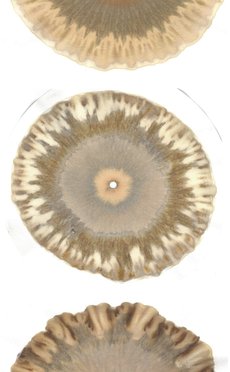Pfeiffer-Lübke round filter paper chromatography
Circular filter paper chromatography is a method for separating substances and enables the qualitative assessment of a wide variety of media.
For some years now, circular filter paper chromatography has been arousing increasing interest in agriculture, research and among consumers, as its possible applications are extremely universal. On the one hand, it is very easy for practitioners to access and utilise in practice, and on the other hand it offers a wide range of application options for holistic scientific research.
The Pfeiffer-Lübke chroma test is a form of circular filter paper chromatography that has been used for decades to assess the ‘inner quality’ of soils, composts, plants and foodstuffs.
One of the great advantages of the chroma test (compared to other scientific methods) is that it gives us a direct insight into the life processes of soils, composts and plants.
The chroma test establishes a link between empirical values, observations and analytical data. The chromatogram provides insight into processes that cannot be directly recognised visually or through complex measurements, whether by analytical methods or microscopes, because it visualises life processes.
Chromatograms serve as memory carriers for processes that cannot be recorded as data. They provide information about the presence of substances, as well as their form and state. A chromatogram can depict the development of a state and at the same time show the path to a necessary or desired change. Chromatograms make the degree of ‘inner order’ of an organism clear.
To summarise: a chroma image shows the diversity of life in a soil or compost, whether it has the ability to store nutrients, transform organic matter into humus (and thus retain it in the soil), deal with pollutants or detoxify toxic substances, and much more. The chromatogram also shows whether a food is rich in vitamins and vital substances, etc.
The principle of circular filter paper chromatography is that substances extracted from soils, plants or foodstuffs with the aid of a weak alkaline solution are applied to a round filter disc. This round filter is previously treated with a silver nitrate solution. The patterns and shapes that become visible on the filter disc are a result of the molecular composition of the substrate, the reaction of the extract with the filter paper and the vital forces (shape-forming forces) that act in soils, composts or plants.

